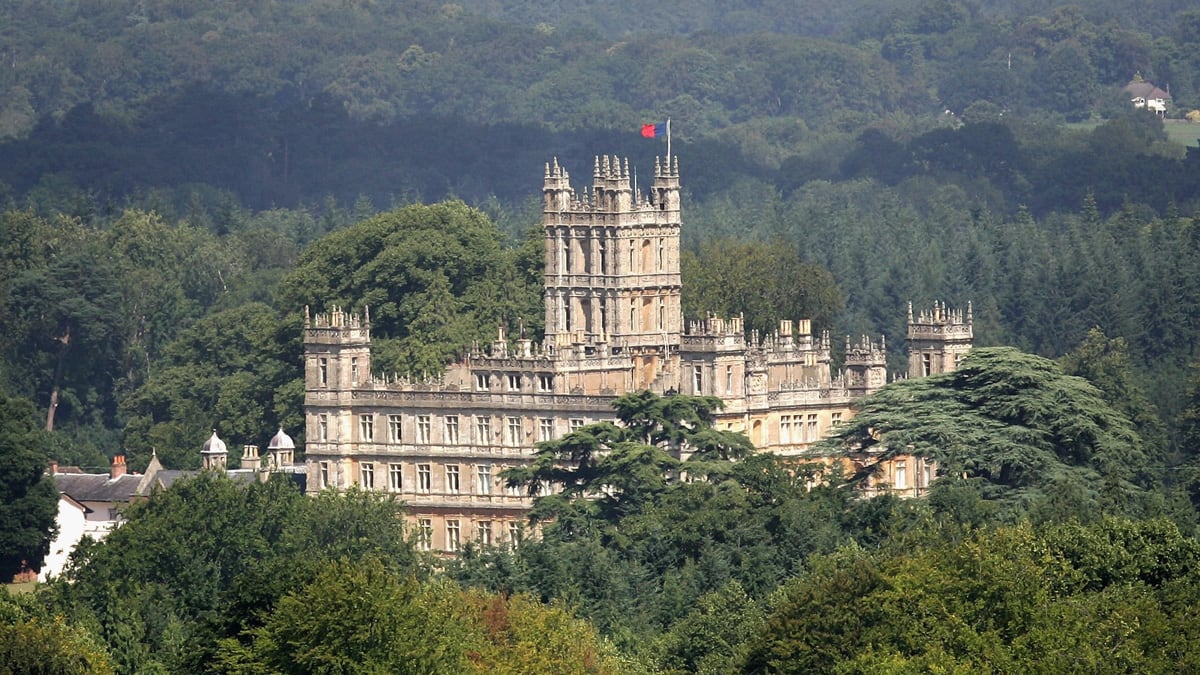One-quarter of English estates changed hands between 1918 and 1921. On the face of such change, Downton Abbey’s having endured this long with the same family was an accomplishment in itself. Such are the sad and fascinating facts on offer in John Martin Robinson’s Felling the Ancient Oaks: How England Lost its Great Country Estates, a lavish and handsome account of 21 estates lost to the ravages of time, and denied the chance even for a second life in BBC exterior shots. Mary Grantham predicted, of nearby estates, “they will fall, lots of them.” How correct she was.

The afflictions of the English estate did not begin with World War I. The Great War was, in many regards, a final shove delivered to an already-tottering institution, which was still a high society talisman and attractive to the nouveau riche like Robert Carlisle, but infrequently self-sustaining. The traditional agricultural foundations of these great estates, which drew their income from rents, had been under steady assault from cheaper, foreign, and especially American imports for decades. Thus all the greater irony that Downton required another American import, Cora Grantham, in order to keep the estate running. (Another New York heiress sustained one of the estates mentioned in the book, Cassiobury, in precisely the same fashion.) George Eliot’s Felix Holt, the Radical, set in 1832, already signals the difficulties ahead:
Meanwhile the fortune that was getting larger in the imagination of constituents was shrinking a little in the imagination of its owner. It was hardly more than a hundred and fifty thousand; and there were not only the heavy mortgages to be paid off, but also a large amount of capital was needed in order to repair the farm-buildings all over the estate, to carry out extensive draining, and make allowances to incoming tenants, which might remove the difficulty of newly letting the farms in a time of agricultural depression. The farms actually tenanted were held by men who had begged hard to succeed their fathers in getting a little poorer every year, on land which was also getting poorer, where the highest rate of increase was in the arrears of rent.
An 1894 estate duty, introduced by a Liberal government, and increased steadily thereafter, proved frequently an expense that estates could not afford, and propelled increasing sales of land in a market where fewer and fewer buyers were prepared to purchase en bloc. Lots were inevitably broken up, and a large number of these properties were lost.
The examples detailed in Felling the Ancient Oaks almost invariably entail the loss of the main house, but make clear that the estate was more than this—not merely the home but also “gardens, parkland, farms, and woods with an attendant village or cottages, and a church with family tombs.” These are vast plots subject to varying impulses of preservation, design, and economy, expanses accommodating formal gardens and sporting landscapes, both agricultural and even industrial production, and a wide variety of structures beyond the principal residence.
These structures at times go back exceedingly far. Some initial land grants date from the Norman conquest. Many, like Downton Abbey (but where is the abbot?) had roots in once-expansive ecclesiastical lands or at times, actual structures redistributed at the reformation or other points. Chicksands, a Bedfordshire estate which eventually become an Royal Air Force and U.S. Air Force base (and served as a military hospital during World War I), actually retained portions of an original priory. An unusual number of these estates were held by Catholics, of whom Evelyn Waugh’s description of the Marchmains could hold precisely true for several families in this volume: “From Elizabeth’s reign until Victoria’s day they lived sequestered among their tenantry and kinsmen.” Marginalized from political power and influence, many dedicated themselves to the maintenance and running of their estates, which were often steady occupations.
Catholicism was no prerequisite for wholesale investment in estate management, however; when Lord Grantham claims “no career beyond the nurture of this house and the estate” he is not merely gilding indolence. Many developed sophisticated agricultural operations; some estates featured coal and iron works on their periphery, others modern textile production facilities. The support and maintenance of churches, hospitals, town halls, and in one case a rail line was not unusual. Not every estate owner was responsible; inheritance often entailed no more business sense than a Bertie Wooster or Mr. Toad. The author excoriates excessive investment in riding sports and stables. One “theatrically obsessed” friend of Noel Coward built a theater particularly for him, and any fool knows that building for Noel Coward is never good for a balance sheet.

Estates were complex undertakings of land management, in which leisure, enterprise, and charity were reliant upon each other and upon a continuing unity of property, which was, in turn, reliant upon the dread entail. The entail, a reliable double-edged menace to the daughter-heavy rich and deus ex machina for the good-hearted poor lad in so much of British literature, ensured more than anything else that these estates would endure. It was of course sexist, but within a larger society that was defiantly so. A daughter, traditionally, would take up residence at her husband’s residence, thus turning an existing estate into surplus property, often to be sold off wholesale or piecemeal. Estates were the original Patek Philippe, quite literally not so much owned as looked after for the next generation, an arrangement which worked quite well until heirs literally had no more money to grease their mechanisms.
Few of these estates fell directly due to the carnage of World War I. Panshanger, in Herefordshire, was sold after two sons died in the war and the third in a subsequent car crash. Many others simply could not be maintained anymore, and could not find buyers. Another class fell prey simply to a shift in values and priorities following the war, due to the horrors of war or to the increasing attractions of an urban society. As Ford Maddox Ford writes in Parade’s End of Christopher and Mark Tjetens, faced with the inheritance of the great estate of Groby: “They were probably not corrupt but certainly, regarded as landowners, they were effete … They were both simply bored at the contemplation of that terrific nuisance.”
A diverse number of menaces soon began to claim estates, mainly related to war requisition. One served as a German prisoner of war camp, another a naval hospital. Government uses continued, with requisitioning for coal mining, the M1 motorway, and, in one especially dramatic case, flooding for a local reservoir. Private uses commanded their share: one estate was consumed by Manchester suburbia, another by a race course, and others by caravan campgrounds. Companies specializing in the dismantling of estates did a burgeoning business, stripping assorted treasures for sale to far-flung corners. As Waugh wrote of Brideshead:
The builders did not know the uses to which their work would descend; they made a new house with the stones of the old castle; year by year, generation after generation, they enriched and expanded it; year by year the great harvest of timbers in the park grew to ripeness; until, in sudden frost, came the age of Hopper; the place was desolate and the work all brought to nothing; Quomodo sedet solo civitas. Vanity of vanity, all is vanity.
Amid these dolorous tales, however, there is some hope, as yesterday’s vanity so often becomes perceived as today’s welcome bequest. For one, portions of these estates have often survived. Chapels, stables, and gatehouses often endure in some converted use. Greens and woods sometimes survive as public parks or nature preserves. Most encouragingly, these cases of loss begin to dry up as these estates become perceived not as costly feudal anachronisms but as valuable heritage. The historical, environmental, and tourism potential of these great estates became increasingly clear, and depredations of earlier decades fell off, with locations increasingly preserved by private owners or the National Trust.
Reassuringly, there are sufficient estates to fill out many future vacations and television series. But just remember: on any future occasion when a dowager countess raises a conflict between an estate and a dowry, don’t simply side with the latter—unless you’d prefer all of your heritage television filmed on a soundstage.





